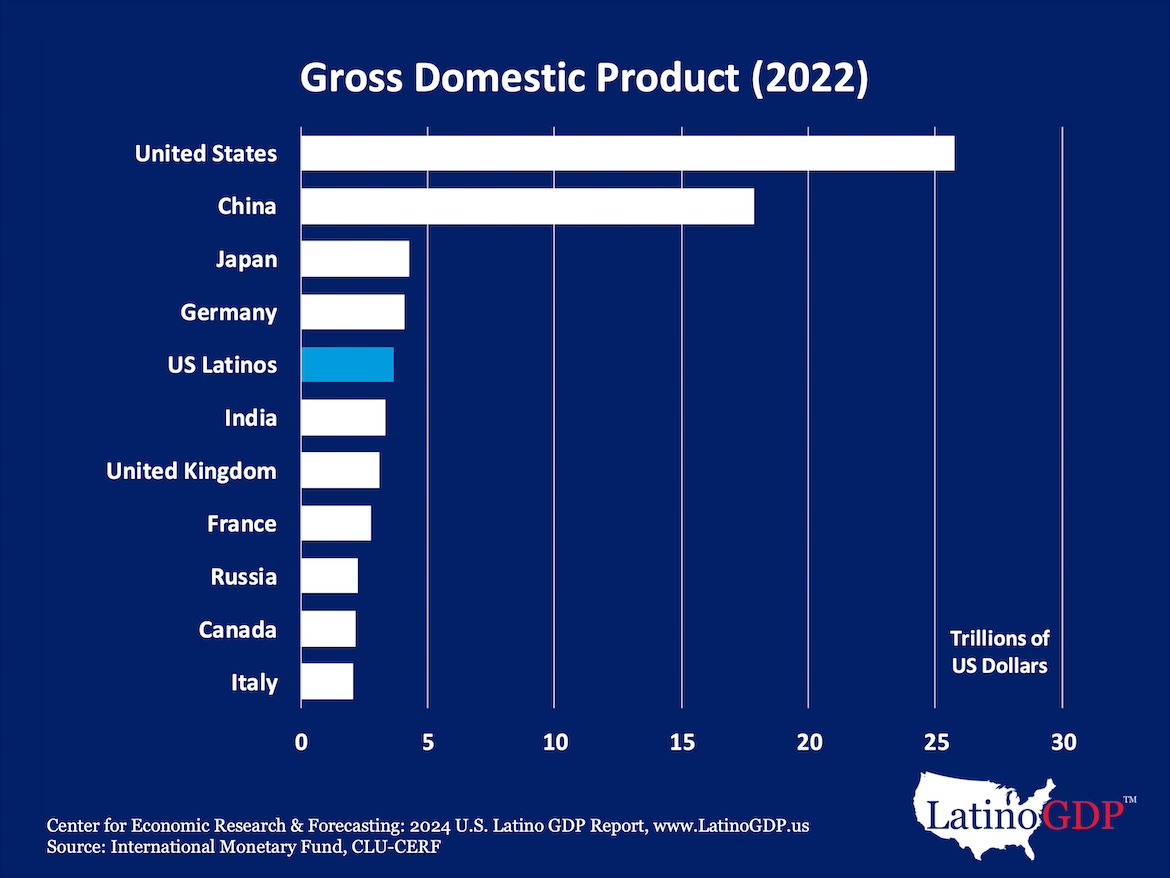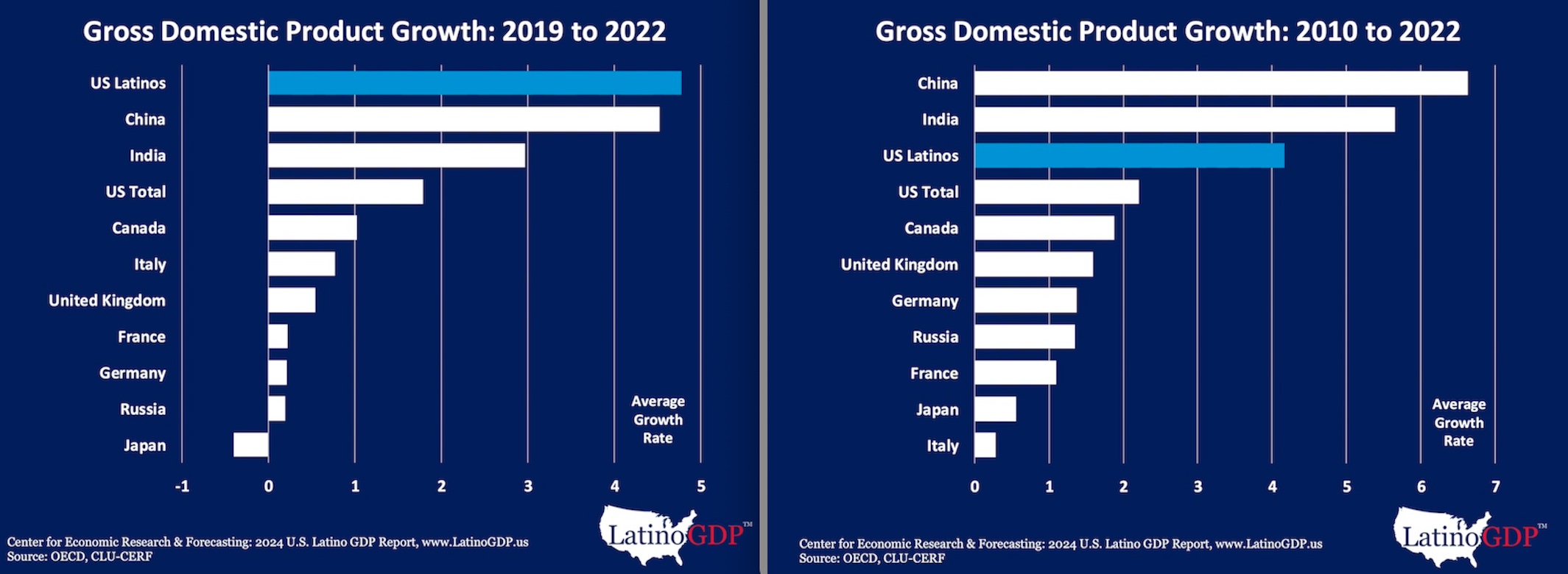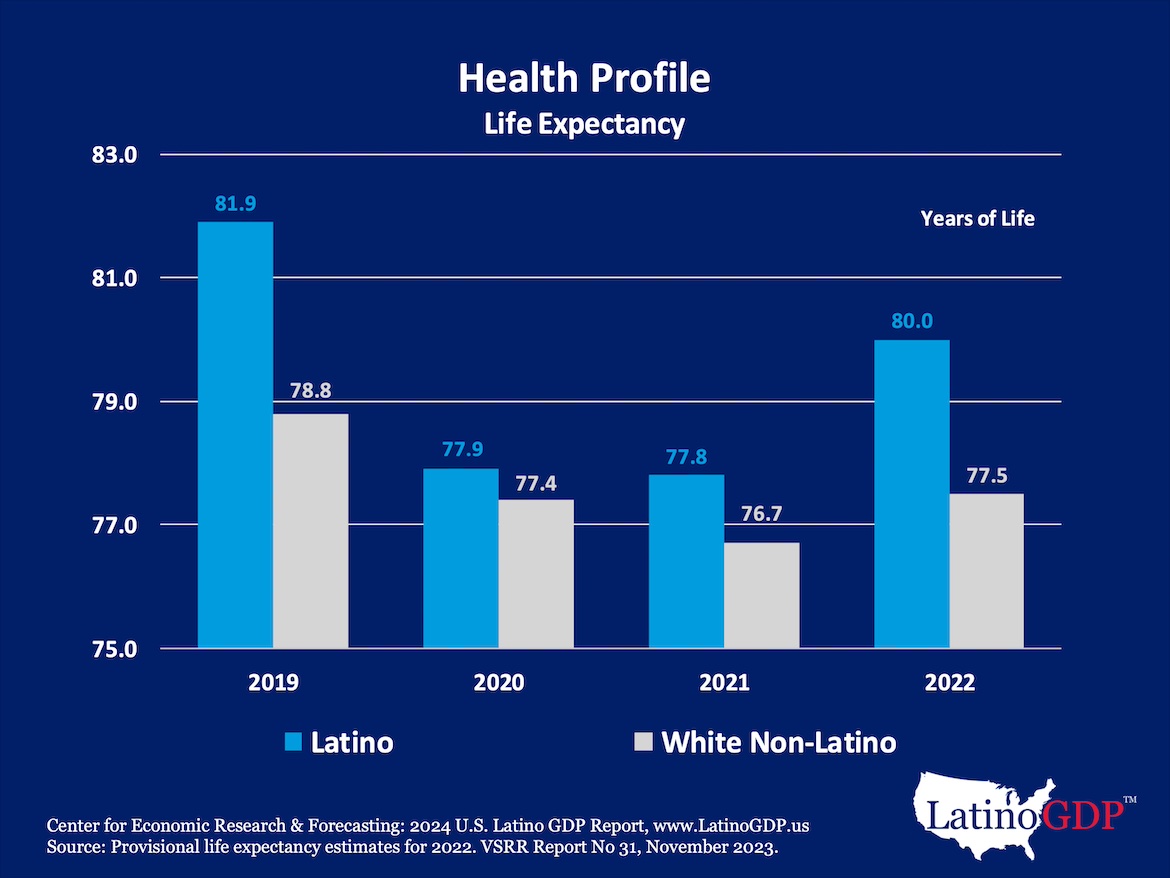Barbra Ramos, UCLA

Latinos helped prop up the U.S. economy during the most challenging days of the COVID-19 pandemic and then spearheaded the nation’s economic recovery, according to the latest U.S. Latino GDP report, released today by researchers from UCLA and California Lutheran University.
The total economic output, or gross domestic product, of Latinos in the U.S. reached $3.7 trillion in 2022, the researchers found, exceeding the historic $3.2 trillion mark set in 2021. The latest figure would make the U.S. Latino GDP the fifth largest GDP in the world for 2022 — greater than India, the United Kingdom and France.
Since its inaugural release in 2017, the report, which is currently produced annually by the UCLA Center for the Study of Latino Health and Culture and Cal Lutheran’s Center for Economic Research and Forecasting, has provided a detailed view of the large and rapidly growing economic contributions of Latinos living in the United States. UCLA’s David Hayes-Bautista, who co-founded the U.S. Latino GDP Project and the report series, first began the effort to track information on the Latino GDP in 2004.
The new findings show a continued upward trend in the economic performance of Latinos in the U.S, with their GDP rising from $1.6 trillion in 2010 to $2.8 trillion in 2019 before topping $3 trillion for the first time in 2021, in the midst of the COVID-19 pandemic.

“When COVID-19 struck, many analysts predicted that earlier Latino economic gains would be erased,” said David Hayes-Bautista, a distinguished professor of medicine at UCLA and co-author of the report. “But the U.S. Latino GDP has continued to roar on.”
During the pandemic years of 2019 to 2022, the average annual growth of real U.S. Latino GDP was 4.8 percent, compared with just 1.5 percent for the broader U.S. economy, the researchers found. Over that same period, Latinos were responsible for 41.4 percent of the growth in real U.S. GDP, despite comprising just 19.2 percent of the U.S. population.
In fact, the performance of Latinos during the pandemic was sufficient to make the U.S. Latino GDP the fastest-growing GDP among the world’s top 10 economies from 2019 to 2022, outpacing the GDP growth of economic powerhouses like China, India and the U.S. as a whole, which came a distant fourth.
“Examining the impacts of COVID-19 on the U.S. economy through the lens of the Latino GDP is very revealing,” said Matthew Fienup, executive director of the Center for Economic Research and Forecasting at Cal Lutheran and co-author of the report. “We believe that the economic data published in this year’s U.S. Latino GDP report illustrate just how vital Latino strength and resilience are for the nation’s economy.”
Over an even greater timespan, from 2010 to 2022, Latinos have shown that they are a major driver of economic growth in the U.S. During that period, the U.S. Latino GDP was the third-fastest-growing among the 10 largest GDPs in the world. And over that same period, the average annual growth of real U.S. Latino GDP was 4.2 percent, compared to only 1.7 percent for the broader U.S. economy.

COVID-19, Latinos and the return of the ‘Latino healthy lifestyle advantage’
Even as U.S. Latinos continued their prodigious economic output during the pandemic, they were struck particularly hard by COVID-19. Between 2020 and 2021, the coronavirus became the No. 1 cause of death for Latinos — but the third-most-common cause for non-Latinos.
The U.S. Latino GDP report shows that by 2022, however, the rate of COVID-19–related deaths among Latinos had dropped by more than 50 percent from its peak. While the 2022 rate was still slightly higher than for non-Hispanic whites, Latinos’ death rates from other causes, including heart disease, cancer, unintentional injuries and chronic respiratory diseases, remained significantly lower — rebounding a phenomenon known as the “Latino healthy lifestyle advantage.”
That reassertion can be seen in Latino life expectancy numbers. In 2019, Latinos were expected to live three years longer, on average, than non-Hispanic whites, but that advantage dropped to just six months at the height of the pandemic. By 2022, it had rebounded to two-and-a-half years.

“Just this past spring, a published study announced the disappearance of the Latino healthy lifestyle advantage,” Hayes-Bautista said. “But our latest report marks the return of the Latino healthy lifestyle advantage as one of the factors that drives the Latino GDP’s tremendous growth.”
The Latino GDP Project releases additional research reports throughout the year on the large and rapidly growing economic contributions of the Latino population in targeted states and major metropolitan areas. This August, the researchers also produced the inaugural Latina GDP report, released on Women’s Equality Day, which details the vital impact of Latinas on the U.S. economy.
“Hard work, self-sufficiency, optimism, perseverance — these are the characteristics that underly the strength and resilience of U.S. Latinos,” said Fienup. “We believe these same characteristics will continue to drive growth in the overall United States economy for years to come.”
Related links
-
UCLA Magazine: Félix J. Gutiérrez and the first Latino student magazine at UCLA
-
UCLA’s Latino Policy and Politics Institute hosts annual state policy briefing
-
Women and people of color drive viewer ratings for top streaming films (UCLA)
-
Historic gift to UCLA School of Law advances Latino legal scholarship
-
Alumni Helen and Morgan Chu pledge $10 million to benefit UCLA Institute of American Cultures
-
Changes to U.S. data collection on race and ethnicity could be a boon to public health (UCLA)

